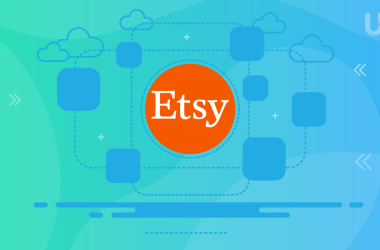The cost of setting up and running an online store consists of many factors, including additional services that you may not know about when planning online sales. What expenses would you have to make? In this guide, I will look at the approximate costs of all the necessary components to open your online store.
The idea for an eCommerce business in the form of an online store is no longer innovative. eCommerce has become mainstream, and being online is standard and often mandatory. But I assume you know all this. Moreover, you probably already have a product or service. Now it’s time to choose the right tools that will enable you to sell online. To make the best choice, you naturally need to know how much the solutions cost and what options you have.
Every successful e-commerce project should have an estimated budget, and it also applies to your future online store. Answer the question: “how much does it cost to set up an online store?” It is not easy. It all depends on what your requirements and expectations are. But I will try to help you find the answer. Let’s start!
Choosing a platform to operate the store
Can an online store be free?
Surely you know the saying that nothing in life is free. It is possible to open an online store for zero dollars, although it will be so limited that you will eventually buy additional options or a premium version. This type of offer is a typical model of acquiring customers for higher-paid plaques, not an act of charity.
To find platforms with free online stores, type in “free online store” in Google, and you’ll see loads of results. They work, but you will quickly run out of the possibilities of the free version of the online store platform and will be forced to switch to the premium plan, anyway. Sometimes it’s a trap to catch clients.
Therefore, an online store is never free; it always costs the owner a lot of sacrifices. Do not place too high hopes or far-reaching development plans on this option. If you are serious about the e-commerce business and owning an online store that makes real money, you probably realize that you must pay for some things.
Subscription online store – SaaS
An e-commerce store in the subscription version (the SaaS model) due to the low entry threshold is an attractive solution. You can buy and run the basic version of an online store based on an e-commerce platform for a dozen or so dollars a month, although the prices of higher packages can also reach several hundred.

Of course, these solutions are not without flaws. The ease of starting is undoubtedly one of the cardinal advantages of this type of solution. They offer a ready-made look for an online store, which is both a plus because you don’t have to worry about the visual side, and a minus because the possibility of personalization is limited. You don’t need technical skills because the platforms are usually simple to configure.
Remember that you only buy access to the service provider’s system. You can’t influence the development of functionalities within a given platform. And as soon as you stop paying, the entire store you built will disappear. Very often irretrievably.
It is not a scalable option, it has many limitations, and I do not recommend it to most eCommerce entrepreneurs. If you have a limited budget and are a beginner, you may be very tempted, but analyze in detail whether it will be a good solution for you. Utilizing a comprehensive guide for project estimates and budgeting can assist you in making informed decisions and avoiding potential financial pitfalls.
However, investing a little more time in the beginning to create a store that allows for full personalization, offers opportunities for future development, and grants you the freedom to transfer it to another service provider might be a better approach.
Online store based on CMS
You can choose one of the three most popular solutions for an online store. Check out in another article which script will be best for you: WooCommerce, PrestaShop, or Magento? I have listed them in order from simplest to most advanced.
Although all these CMSs (WooCommerce is a plugin for WordPress) are free and Open Source, only WooCommerce can be gratis for a person without much programming skills. PrestaShop is the most popular platform among professional online stores. Magento, on the other hand, is the most complicated solution; it is the best choice for the largest eCommerce stores.
I will not give a specific cost for creating your shop because it depends on your needs. You can create your store based on free WooCommerce themes and free plugins. The design cost will be $0, and you can do it even if you don’t know any languages.
If you have a specific vision for your store and you have no PHP, CSS, or HTML skills, then creating a simple but customized store will cost you between $500 and $3000. More advanced solutions will be associated with higher costs. An advanced PrestaShop store can cost several thousand dollars. A professional and colossal online megastore based on Magento can cost dozens of thousands of dollars.
Domain and SSL
Unless you want to buy a prestigious domain from someone else (e.g., 3377.com for $100,000), your domain will cost between $5 (.xyz) and $72 (.io) per year. A .com domain costs $13 a year.
Be careful with promotions because some companies offer discounts or even a domain for free for the first year, however, the price of renewal after that is much higher, as well as the price of the domain transfer. If you are creating a real business, calculate the cost of the domain over five years, also looking at the renewal price.
An eCommerce store must have an SSL certificate. No customer will enter their data unless they are sure that the connection is encrypted. There are different types, but Let’s Encrypt will suffice. The simple SSL certificate is free as long as you use a reliable hosting provider.
Hosting
To save your time, I will recommend you the best eCommerce hosting. You will find it in the UltaHost offer. In addition to the parameters I have already listed, you will receive 24/7 support provided by experts. The best eCommerce hosting on the market.

If you want to run an eCommerce business, definitely forget about the cheapest shared hosting packages. They are absolutely unsuitable for commercial activity. The cheapest VPS package for small shops is $5.50 per month. However, if 1 CPU Core, 1 GB RAM, and 30 GB on an NVMe SSD drive are not enough for you, choose a higher package. The higher, the more expensive.
A professional eCommerce store will require hosting with at least 4 GB of RAM, which is about $20 per month. If you’re going to build a huge platform, you might even need dedicated hosting for $150 a month.
What is crucial when choosing eCommerce hosting is support for selected scripts. It’s not just about the ability to install the script with one click but about additional solutions: plugins, templates, hosting panel linked to the CMS panel, and optimization for a given platform. You also need to pay attention to NVMe SSDs, because the speed of loading files depends on them. After all, your store needs to run fast and smoothly. Also, pay close attention to hosting security and uptime.
Content
Your multivendor eCommerce platform should be complemented by a blog or an extensive knowledge base. It is necessary in order to achieve a high position in the search engine because, without high-quality content, your website will not achieve good results in SEO. And good content means not only SEO support but also the possibility of content marketing, increasing conversion, and customer loyalty.

You also need to take care of the original descriptions. By copying standard descriptions that other online stores use for the same products, you duplicate content. They will neither sell nor be positioned.
Now the question: can you write? If you can and are willing to devote your time, you can create a blog and original descriptions for free. But if you’re not a keyboard master or don’t have time, you’ll have to hire a copywriter. On websites for Freelancers, you can find daredevils who will write an article for $10. If you’re looking for a professional copywriter, you’ll need to be prepared to pay more: $30 to $100 per article.
It would be good to start by writing product descriptions and 20 articles for SEO, which can range from $400 to several thousand dollars, and then publish 6-10 articles a month (the cost will be from $60 to $500).
Accepting payments
You need a payment gateway to receive payments. The choice depends on the payment methods you want to offer and the country you reside. If you plan to provide local services, you will need local currency; in this case, look also for local payment gateways. If your eCommerce store is intended to be international, look for gateways that offer the ability to pay in different currencies.
The most popular payment methods are bank transfer, debit or credit card, fintech apps, Paypal, and Bitcoin. Additionally, you may want to consider applying for a credit card to further expand your payment options.
Registration and installation of most payment gateways are free, and fees are charged per transaction. For example, Braintree costs from 2.59% + $0.49 to 4.59% + $0.49, and Authorize.net charges similar fees. Skrill may be cheaper (some payment methods are free, but it depends on the country). Another popular solution is Stripe. However, make the exact choice of payment gateway based on your situation.

If you want to accept Bitcoin, you need to use a separate payment gateway. The great advantage of accepting transactions in Bitcoin is the lack of transaction fees (or very low fees). Completely free solutions are Blockonomics, BTCPay, CopPay, and AnyPay, while commercial solutions (commission from 0.1% to 0.5%) are CoinPayments, Binance Pay, and Zonda Pay.
Regulations
You can’t forget about legal issues. When creating and managing your online store, you will need to be familiar with many laws in areas such as copyright law, financial law, banking law, and regulations related to business activity. You must have the appropriate documents on your website, regulating the services you provide, accepting payments, and processing personal data. Consider where your store will operate and adapt your regulations accordingly.
Some copy terms and conditions and legal notices from other sites, but this is not the best solution. It is an enormous risk because these regulations apply to a given company that operates in a particular area and has its headquarters in a given place.
If you want to operate internationally, it is best to adapt your website to the legal system in force in the US and the EU. In this way, your website will likely comply with the regulations in most countries of the world. The cost of preparing the necessary documents can range from 50 to $1000, and in the case of more complex and extensive businesses on a larger scale, even more.
Conclusion
So as you can see, the cost of setting up an online store varies greatly. If you want to set up a small shop and can devote your time to it, choose WordPress with WooCommerce, create content yourself, spend time configuring and editing the template yourself, searching for and installing plugins, and look for free legal advice on the Internet. Then the only fixed cost will be the domain and hosting, which will cost approximately $100 per year.
In addition, you will pay a commission to the payment operator. Well, maybe the only payment methods in your store will be cash, bank transfer, and Bitcoin.
The costs increase with your needs: from purchasing premium plugins and themes through additional functionalities on your website, commissioning copywriting, preparation of legal contracts, better hosting, or even designing a dedicated store for you on PrestaShop or Magento. The upper limit is set by your needs: it can be several or even tens of thousands of dollars.
Don’t forget to choose the best eCommerce hosting from UltaHost hosting platform. Get 24/7 support from our support team. Our powered infrastructure focuses on auto-scaling, performance, and security. Let us show you the difference! Check out our plans!










